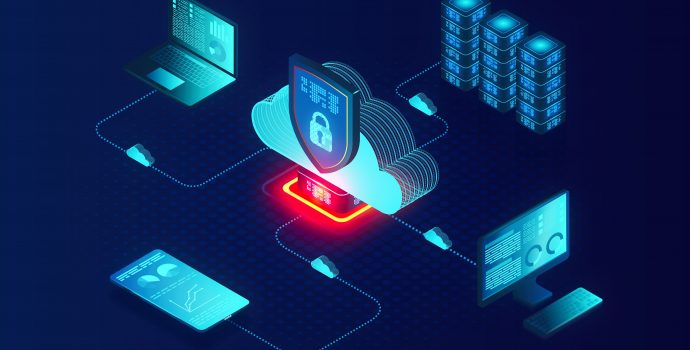Causes, Impacts, and Countermeasures
SYSCOM GLOBAL SOLUTIONS’ Security Operations Center is on the frontlines of ever-changing cybersecurity threats and responses. As a service to our clients and partners, the Cybersecurity Minute provides updates on evolving cybersecurity threats, countermeasures, and security strategies they’re seeing and using in the course of their regular security work.
Damage done by cyber-attacks has been steadily increasing in recent years, to the point that hearing about a new cybersecurity incident—even corporate information leaks—has become routine. Japanese companies in the US are no exception, with many reporting significant damage.
At the same time, proactive cybersecurity measures are becoming more complex and diverse by the day. Customers often complain that they don’t know what measures their companies need to take in order to manage cybersecurity risk.
As a part of our continued service to our clients and customers, our Security Operations Center team’s new Cybersecurity Minute series looks at the cybersecurity threats and countermeasures our team is seeing in the course of their regular security work.
In this first column, we’re looking at the causes and impacts of cybersecurity incidents, then discuss steps that can be taken to help prevent them.
1. Key Causes
Several trends factor into the increase in cybersecurity incidents among Japanese companies in the United States.
● Acceleration of Digitization: In the wake of the pandemic, many companies updated their IT environments to enable remote work. When not done diligently and carefully, rapid digitization can expose system vulnerabilities and inadequate security measures.
● Globalization: As Japanese companies expand overseas, they will have to adapt their cybersecurity measures to different cultures, laws, and regulations. Some Japanese cybersecurity profiles will not be effective if not adapted to their new environments. What’s more, expanding abroad can make companies targets for espionage and cyber-attacks from nation-states.
● Increasing sophistication of cybercrime: Just as we continue to get more sophisticated, so do cybercriminals. Attackers are using more advanced techniques that traditional security methods are not equipped to respond to, leading to more cybersecurity risk.
2. Impacts
Cybersecurity incidents can have severe repercussions for businesses, including:
● Financial Damage: Ransomware attacks are on the rise. Ransomware is just what it sounds like: malware that renders a target company’s data unreadable and demands a ransom in return for restoring the data. Many victims have no choice but to comply and pay out huge sums of money. Even when the ransom is paid, there’s no guarantee the data will be restored, with some attackers demanding even more money.
● Information Leak: Confidential information of clients, employees, and companies themselves can be leaked to third parties and misused. The damage isn’t always limited to the original site of the information leak, and can often extend to other locations connected via the network. There has been a recent spate of leaks in the manufacturing industry in particular, due to the industry’s relative unpreparedness and many companies not being up to date on current threats. Intellectual property, such as information and data held by manufacturers, tends to also be a target due to its high value.
● Loss of Credibility: Cybersecurity incidents can severely damage a company’s brand image and trustworthiness when made public. Even security breaches in other markets, regions, and continents can affect the stock price and reputation of a head office in Japan. Reaffirming one’s commitment to cybersecurity and addressing it can enhance a company’s credibility and ensure continued stability.
3. Countermeasures
To prevent security breaches, companies should take the following proactive cybersecurity measures:
● Risk Assessment: Conducting a thorough cybersecurity risk assessment will identify threats and vulnerabilities to your system and help you see and take appropriate countermeasures. Regular, consistent risk assessments are an important part of any security measure and help manage cybersecurity risk.
● Develop a Security Policy: Establishing and publicizing a security policy to your employees will ensure they understand your procedures and raise awareness throughout your organization. Employees should be expected to understand basic security knowledge and codes of conduct, so they can take appropriate cybersecurity measures autonomously.
● Technical measures: Implementing the latest cybersecurity solutions—and regularly updating and patching your system—is crucial to improving the system’s protection.
● Human Resource Development: It’s vital to hire and train employees with specialized security knowledge and skills. Have a security expert in-house to provide infosec training and tech assistance, or outsource the expertise to an external security vendor.
The only constant in cybersecurity is change, but with a well-informed strategy and trusted partners, IT managers can stay ahead of threats and protect their digital environments from bad actors.
In our next Cybersecurity Minute, we’ll explain countermeasures any organization can take to lessen their exposure.
News and Resources
Employee Spotlight: Hector Melo
How Hector Melo’s desire to keep growing sets the tone for SYSCOM. “You don’t stop learning at SYSCOM. You always learn something new.”
The differences and importance between OT Security and IT Security
In this article, we’ll explain the reason why OT security is so important and lay out steps and key points for successful OT security measures.
Cybersecurity Minute by SOC Team ③
The third article of our Cybersecurity Minute series explains two powerful applications of cybersecurity for modern businesses: the Zero Trust Model and Information Leakage Mitigation.



